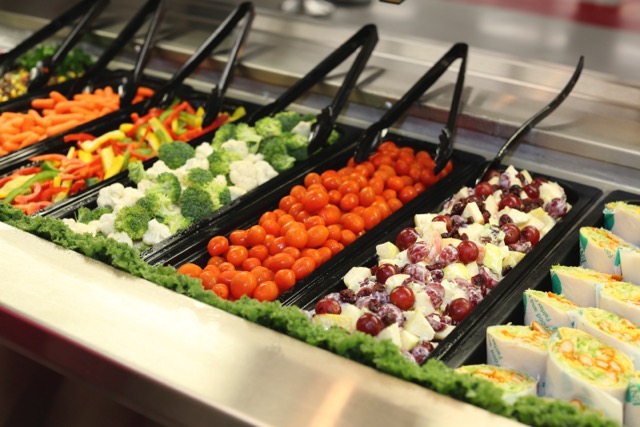Several years ago, a parent approached me at a PTA meeting with concerns about the school lunch program. He wanted to know if the PTA at our school would take a serious look at it. I really didn’t know anything about school food but I had a personal interest in fitness and healthy eating, so I believed it was worth our attention.
Fast-forward several years. I have learned a lot about our national school food program. There is not an easy solution. It is a system with cost constraints, logistical issues and complicated nutritional guidelines. Schools may lack the training or equipment they need to be successful—or the support of the community.
Creating change in our school food program takes a lot of drive, determination, patience and understanding. But change can happen.
Rachel Stott, a parent in Vienna, Va., says, “I was very happy to hear the 26-ingredient burgers served in the school cafeteria were replaced with a 100% beef burger! This meant that my child—who has a severe soy allergy—could safely eat it, as it no longer had soy protein in it. Cleaning up the food makes a big difference for children with allergies.”
Here’s how concerned PTA parents can advocate for better school food:
- Educate yourself about school food. Learn what you can about how the school food program works at your school, your district and in our country. Have lunch at school with your child (more than once).
- Determine your ask. Simply saying, “improve school food” is not enough! You must determine what is important to students and parents in your particular program. Be specific in your request so that it can be addressed.
- Collaborate with stakeholders. Build relationships and partnerships to determine similar goals. Gather support with parents at PTA meetings. Meet with your principal. Get his or her views on wellness and the vision for the school environment.Meet the school cafeteria manager and the Food and Nutrition Services (FNS) director for the district. Work together to make changes, improve quality/taste and to help increase sales for the cafeteria.Discuss the importance of a healthy school environment with the school board. Try to bring this issue to the top of their priorities list.
- Keep it positive! This point cannot be stressed enough. You are asking FNS to make change. This is not the forum for demanding change in loud voices. For sustainable change, it is essential to have a trusting relationship.
Making the effort to improve the foods our children eat is well worth it.
Student Nikki Pope was elated when a fresh food bar was put in her school, saying, “It provides a really great option for students who want a wider variety of healthy choices at school. I stopped bringing lunches from home most days because I really like the taste and selection of food that my school offered, and it was as healthy as food I would bring from home.”
There are some general areas of improvement you can recommend to your school district:
Add a salad bar. Salad bars provide a wider assortment of fresh produce, which is one of the biggest requests I have received over the years. Request that all the food served on the bar is fresh. Kids like fresh food!
Remove harmful additives from school food. There has been a lot of progress in removing additives from certain foods at grocery stores. We now need to make sure manufacturers know that parents want foods free of artificial additives, dyes and preservatives from school food, too.
Transition to more freshly made meals. Depending on the type of equipment in your school kitchen, start a discussion with the school nutrition team to determine ways to bring in more freshly prepared foods and remove highly processed foods.
Promote healthy choices in the lunch line. Follow the Smarter Lunchroom Movement principles for layout and display. Remove items like cookies from point of sale.
Get students engaged in school food. Make learning about fresh food fun! Have the PTA support programs such as Farm to School, Food Day and taste tests. Start a school garden that is incorporated into the curriculum in several subject areas. Help launch a student nutrition club.
Support healthy fundraisers. Show the FNS team that you support their efforts by making sure all food choices available during the day are healthy options. Get healthy fundraising ideas on the National PTA website. This includes food available for sale in vending machines after the school day ends.
JoAnne Hammermaster is the health & wellness chair for the Georgia PTA. She is also co-founder and chairman of Real Food For Kids, a non-profit that strives to improve school food in our communities.





